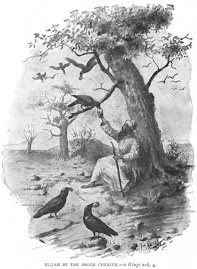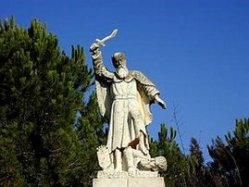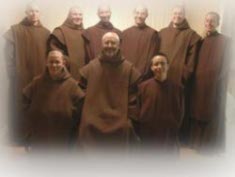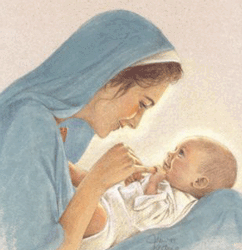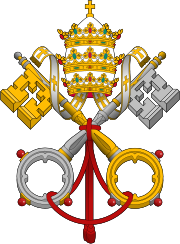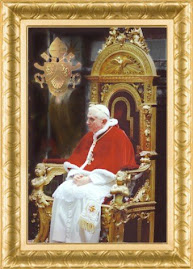
We who hold faithful to what the Roman Catholic Church teaches, believe that Our Lord and Savior, Jesus Christ, is truly present in the Most Holy Eucharist. We believe it on the words of Jesus Christ, the Son of God, who promised to give us His flesh to eat and blood to drink, at the lakeside of Galilee (John 6, 48-60), and who fulfilled that promise at the Last Supper (Matt. 26: 26-28; Luke 22: 19-20; Mark 14: 22-24; 1 Cor. 11: 23-25). We have also the divine, infallible testimony of the Catholic Church which He established. The Holy Synod (the Council of Trent) teaches.... "that in the august sacrament of the Holy Eucharist, after the Consecration of the bread and wine, Our Lord, Jesus Christ, true God and true man, is truly, really and substantially contained under the appearance of those visible signs." Over the centuries, Our Dear Lord has seen fit to work over 100 miracles confirming His real presence in the Most Blessed Sacrament. What is the purpose of these miracles? To prove what He said is true as the scripture says: "The Lord confirmed the word with signs that followed." (Mark 16:16) He wants us to believe His teaching and threatens us with damnation if we do not. "He that believeth not shall be condemned." (Mark 16:16) God is willing to give extraordinary means to help our faith because He desires our salvation. Jesus goes so far as to say: "Though you will not believe Me, believe the works." (John 10:38) "They give testimony of Me."
In the city of Lanciano, Italy, around the year 700 of Our Lord there was a priest of the order of St. Basil who, though learned in the sciences of the world, was ignorant in ways of God, and was not strong in his faith. He was plagued by a doubt as to whether the consecrated Host was truly the Body of Christ, and the consecrated wine truly His Blood. He had difficulty believing in the mystery of transubstantiation (the miraculous changing of the bread and wine into the Body and Blood of Christ). One morning, as he was celebrating Mass, he had already said the most holy words of consecration ("This is My Body..., This is my Blood..."), as Jesus had taught it to his Apostles, his doubts and errors weighed upon him more heavily than ever. By a most singular and marvelous grace, he saw the Bread changed into Flesh and the wine into Blood. Frightened and confused by such a great and stupendous Miracle, he stood quite a while as if in a divine ecstasy; but eventually, his fear gave way to the spiritual happiness that filled his soul, and he turned his joyful yet tearful face to those around him, exclaiming "...Behold the Flesh and the blood of our Most Beloved Christ." At those words, the bystanders ran to the altar and began, with tears, to cry for mercy. The faithful, who, having become witnesses themselves, spread the news throughout the entire city. Today twelve centuries after the miraculous occurrence it remains intact, a sustained miracle! Upon a superficial examination, the Host of Flesh, which is still in one piece and has retained the dimensions of the original "Large Host", has a fibrous appearance and a brown color, which becomes light-reddish if one places a light in the back of the Ostensorium. The blood, contained in the chalice, has an earthly color, inclined toward the yellow of ocher, and consists of five coagulated globules. Each of the parts is uneven in shape and size, and when weighed together, the total weight is equal to that of each piece. The actual spot of the miracle is located beneath the present day tabernacle of the Church of St. Francis. The Miracle Itself is preserved in the second tabernacle, which is found in the high altar. The Host, now changed to Flesh, is contained in a silver Monstrance. The wine, now changed to Blood, is contained in a crystal chalice.
Official Position of the Catholic Church. Local Church and Vatican official have authenticated the Eucharistic miracle on many occasions since the middle ages. In 1672, Pope Clement X declared the altar of the Eucharistic Miracle a privileged altar on all Mondays of the year. In 1887, the Archbishop of Lanciano obtained from Pope Leo XIII a plenary indulgence in perpetuity to those who visit the Church of the Miracle during the eight days preceding the annual feast day, which falls on the last Sunday in October.
Scientific Studies. A rigorous scientific analysis was performed in 1970-71 by Professor Dr. Odorardo, University Professor in anatomy and pathological histology and in chemistry and clinical microscopy, Head Physician of the United Hospitals of Arezzo. Prof. Linoli was assisted by Prof. Dr. Ruggero Bertelli, a Professor Emeritus of anatomy at the University of Siena.
The research done on the fragments of the Blood and the Flesh yielded the following results:
* The Blood of the Eucharistic Miracle is real blood and the Flesh is real flesh.
* The Flesh consists of the muscular tissue of the myocardium (heart wall).
* The Blood and the Flesh belong to the human species.
* The blood type is identical in the Blood and in the Flesh, type AB.
* The proteins in the blood are in the same proportions as those found in normal fresh blood.
* There is no trace whatsoever of any materials or agents used for preservation of flesh or blood.
Science, when called to testify, has confirmed what we have believed in Faith and what the Catholic Church has taught for the last 2,000 years; echoing the words of Christ, "My Flesh is real food; my Blood real drink. Whoever eats My Flesh and drinks My Blood dwells continually in Me and I dwell in him."-John 6:56-57
Very detailed Scriptural evidence supporting the Real Presence of Our Lord in the Blessed Sacrament of the Alter is provided by: Scripture evidence for the Teaching of the Catholic Faith - The Eucharist




